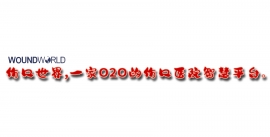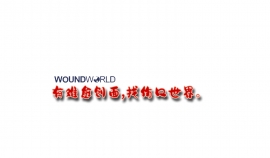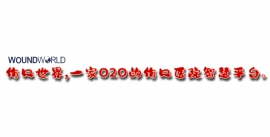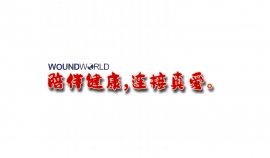文献精选
Antonio Scarano1 · E. Qorri2 · A. Sbarbati3 · S. A. Gehrke4 · Alessio Frisone1 · D. Amuso3 · Sergio Rexhep Tari1
Received: 30 March 2024 / Accepted: 17 May 2024 / Published online: 24 June 2024
© The Author(s) 2024
Antonio Scarano
该Email地址已收到反垃圾邮件插件保护。要显示它您需要在浏览器中启用JavaScript。
E. Qorri
该Email地址已收到反垃圾邮件插件保护。要显示它您需要在浏览器中启用JavaScript。
A. Sbarbati
该Email地址已收到反垃圾邮件插件保护。要显示它您需要在浏览器中启用JavaScript。
S. A. Gehrke
该Email地址已收到反垃圾邮件插件保护。要显示它您需要在浏览器中启用JavaScript。
D. Amuso
该Email地址已收到反垃圾邮件插件保护。要显示它您需要在浏览器中启用JavaScript。
Sergio Rexhep Tari
该Email地址已收到反垃圾邮件插件保护。要显示它您需要在浏览器中启用JavaScript。
1 Department of Medical, Oral and Biotechnological Sciences, University of Chieti-Pescara, Strada Marcello Mucci 38/B, 66100 Chieti, Italy
2 Department of Dentistry, Faculty of Medical Sciences, Albanian University, 1001 Tirana, Albania
3 Department of Neurosciences, Biomedicine and Movement Sciences, Anatomy and Histology Section, School of Medicine, University of Verona, Verona, Italy
4 Department of Research, Bioface/PgO/UCAM, Montevideo, Uruguay
Abstract
Background Various techniques have been employed in aesthetic medicine to combat skin aging, in particular that of the facial region. Hyaluronic acid is utilized to enhance moisture levels and extracellular matrix molecules. This study aims to histologically assess the efects of low molecular weight hyaluronic acid fragments combined with amino acids (HAAM) on facial skin rejuvenation through intradermal microinjections.
Methods A total of twenty women, with an average age of 45 and ranging from 35 to 64 years old, participated in the study, including 8 in menopause and 12 in the childbearing age group. Mesotherapy was used to administer HAAM to the patients. Prior to and three months after the treatment, each patient underwent small circular punch biopsies. Ultrasound examinations were conducted using B-mode, capturing 2D images in longitudinal or transverse orientations with frequencies ranging from 5 to 13 Mega-hertz (MY LAB X8, ESAOTE, Genova, Italy). A total of 60 ultrasound examinations were taken, with 30 collected before treatment and 30 after treatment.
Results The histological analysis demonstrates an increase in fbroblast activity resulting in the production of Type III reticular collagen, as well as an increased number of blood vessels and epidermal thickness. However, the analysis of ultrasound data before and after treatment showed no statistical diference in skin thickness in malar area, chin and mandibular angle.
Conclusions Histological assessments indicate that subcutaneous infltration of HAAM has a substantial impact on the dermis of facial skin.
Keywords Hyaluronic acid · Hyaluronic acid fragments · Amino acid · Fibroblast · Skin aging · Ultrasound
Jefferson L. Triozzi, MD, MSCI; Zhihong Yu, MS, PhD; Ayush Giri, MS, PhD; Hua-Chang Chen, PhD; Otis D. Wilson, BBA; Brian Ferolito, MS; T. Alp Ikizler, MD; Elvis A. Akwo, MD, MS; Cassianne Robinson-Cohen, PhD; John Michael Gaziano, MD, MPH; Kelly Cho, PhD, MPH; Lawrence S. Phillips, MD; Ran Tao, PhD; Alexandre C. Pereira, MD, PhD; Adriana M. Hung, MD, MPH; for the VA Million Veteran Program
Key Points
Question Are glucagon-like peptide 1 receptor agonists (GLP-1RAs) associated with kidney disease progression?
Findings In this genetic association study of 353 153 adults, higher genetic GLP1R gene expression as a proxy for GLP-1RAs was associated with a small reduction in the risk of kidney disease progression, even after adjusting for obesity and diabetes.
Meaning These findings support a nephroprotective role of GLP-1RAs.
Abstract
IMPORTANCE Glucagon-like peptide 1 receptor agonists (GLP-1RAs) may have nephroprotective properties beyond those related to weight loss and glycemic control.
OBJECTIVE To investigate the association of genetically proxied GLP-1RAs with kidney disease
DESIGN, SETTING, AND PARTICIPANTS This genetic association study assembled a national retrospective cohort of veterans aged 18 years or older from the US Department of Veterans Affairs Million Veteran Program between January 10, 2011, and December 31, 2021. Data were analyzed from November 2023 to February 2024.
EXPOSURES Genetic risk score for systemic GLP1R gene expression that was calculated for each study participant based on genetic variants associated with GLP1R mRNA levels across all tissue samples within the Genotype-Tissue Expression project.
MAIN OUTCOMES AND MEASURES The primary composite outcome was incident end-stage kidney disease or a 40% decline in estimated glomerular filtration rate. Cox proportional hazards regression survival analysis assessed the association between genetically proxied GLP-1RAs and kidney disease progression.
RESULTS Among 353 153 individuals (92.5% men), median age was 66 years (IQR, 58.0-72.0 years) and median follow-up was 5.1 years (IQR, 3.1-7.2 years). Overall, 25.7% had diabetes, and 45.0% had obesity. A total of 4.6% experienced kidney disease progression. Overall, higher genetic GLP1R gene expression was associated with a lower risk of kidney disease progression in the unadjusted model (hazard ratio [HR], 0.96; 95% CI, 0.92-0.99; P = .02) and in the fully adjusted model accounting for baseline patient characteristics, body mass index, and the presence or absence of diabetes (HR, 0.96; 95% CI, 0.92-1.00; P = .04). The results were similar in sensitivity analyses stratified by diabetes or obesity status.
CONCLUSIONS AND RELEVANCE In this genetic association study, higher GLP1R gene expression was associated with a small reduction in risk of kidney disease progression. These findings support pleiotropic nephroprotective mechanisms of GLP-1RAs independent of their effects on body weight and glycemic control.
Daniela Milosheska . Robert Roskar
Received: August 17, 2022 / Accepted: September 6, 2022 / Published online: October 11, 2022
©The Author(s) 2022
ABSTRACT
Nowadays, numerous skincare routines are used to rejuvenate aging skin. Retinoids are one of the most popular ingredients used in antiaging treatments. Among the representatives of retinoids, tretinoin is considered the most effective agent with proven antiaging effects on the skin and can be found in formulations approved as medicines for topical treatment of acne, facial wrinkles, and hyperpigmentation. Other retinoids present in topical medicines are used for various indications, but only tazarotene is also approved as adjunctive agent for treatment of facial fine wrinkling and pigmentation. The most commonly used retinoids such as retinol, retinaldehyde, and retinyl palmitate are contained in cosmeceuticals regulated as cosmetics. Since clinical efficacy studies are not required for marketing cosmetic formulations, there are concerns about the efficacy of these retinoids.
From a formulation perspective, retinoids pose a challenge to researchers as a result of their proven instability, low penetration, and potential for skin irritation. Therefore, novel delivery systems based on nanotechnology are being developed to overcome the limitations of conventional formulations and improve user compliance. In this review, the clinical evidence for retinoids in conventional and nanoformulations for topical antiaging treatments was evaluated. In addition, an overview of the comparison clinical trials between tretinoin and other retinoids is presented. In general, there is a lack of evidence from properly designed clinical trials to support the claimed efficacy of the most commonly used retinoids as antiaging agents in cosmeceuticals. Of the other retinoids contained in medicines, tazarotene and adapalene have clinically evaluated antiaging effects compared to tretinoin and may be considered as potential alternatives for antiaging treatments. The promising potential of retinoid nanoformulations requires a more comprehensive evaluation with additional studies to support the preliminary findings.
Keywords: Antiaging; Clinical evidence; Cosmeceuticals; Nanoformulations; Retinoids; Retinol; Tretinoin
Key Summary Points
Tretinoin is the retinoid present in medicines for topical application with the strongest clinical evidence of antiaging Tazarotene and adapalene may be considered as tretinoin alternatives for antiaging treatments.
Clinical evidence is lacking for retinoids contained in cosmeceuticals for topical antiaging treatments.
Novel formulations based on nanotechnology are being developed to overcome the major drawbacks of retinoid Further evaluation with in vivo testing and clinical trials are needed to support the preclinical results for the developed nanoformulations containing retinoids.
D. Milosheska INSLAB, Maribor, Slovenia
R. Roskar (&)
University of Ljubljana, Faculty of Pharmacy, Askerceva cesta 7, 1000 Ljubljana, Slovenia
e-mail: 该Email地址已收到反垃圾邮件插件保护。要显示它您需要在浏览器中启用JavaScript。
Gérald J. Prud’homme1,2 *, Mervé Kurt 2 and Qinghua Wang3,4
1 Department of Laboratory Medicine and Pathobiology, University of Toronto, Toronto, ON, Canada,
2 Department of Laboratory Medicine, Keenan Research Centre for Biomedical Science, Unity Health Toronto, Toronto, ON, Canada,
3 Department of Endocrinology and Metabolism, Huashan Hospital, Shanghai Medical School, Fudan University, Shanghai, China,
4 Shanghai Yinuo Pharmaceutical Co., Ltd., Shanghai, China
Edited by:
Cátia F. Lourenço, University of Coimbra, Portugal
Reviewed by:
Mujib Ullah, Stanford University, United States Taylor Landry, East Carolina University, United States
*Correspondence:
Gérald J. Prud’homme 该Email地址已收到反垃圾邮件插件保护。要显示它您需要在浏览器中启用JavaScript。
Specialty section:
This article was submitted to Molecular Mechanisms of Aging, a section of the journal Frontiers in Aging
Received: 28 April 2022
Accepted: 06 June 2022
Published: 12 July 2022
Citation:
Prud’homme GJ, Kurt M and Wang Q (2022) Pathobiology of the Klotho Antiaging Protein and Therapeutic Considerations. Front. Aging 3:931331.
doi: 10.3389/fragi.2022.931331
The α-Klotho protein (henceforth denoted Klotho) has antiaging properties, as first observed in mice homozygous for a hypomorphic Klotho gene (kl/kl). These mice have a shortened lifespan, stunted growth, renal disease, hyperphosphatemia, hypercalcemia, vascular calcification, cardiac hypertrophy, hypertension, pulmonary disease, cognitive impairment, multi-organ atrophy and fibrosis. Overexpression of Klotho has opposite effects, extending lifespan. In humans, Klotho levels decline with age, chronic kidney disease, diabetes, Alzheimer’s disease and other conditions. Low Klotho levels correlate with an increase in the death rate from all causes. Klotho acts either as an obligate coreceptor for fibroblast growth factor 23 (FGF23), or as a soluble pleiotropic endocrine hormone (s-Klotho). It is mainly produced in the kidneys, but also in the brain, pancreas and other tissues. On renal tubular-cell membranes, it associates with FGF receptors to bind FGF23. Produced in bones, FGF23 regulates renal excretion of phosphate (phosphaturic effect) and vitamin D metabolism. Lack of Klotho or FGF23 results in hyperphosphatemia and hypervitaminosis D. With age, human renal function often deteriorates, lowering Klotho levels. This appears to promote age-related pathology. Remarkably, Klotho inhibits four pathways that have been linked to aging in various ways: Transforming growth factor β (TGF-β), insulin-like growth factor 1 (IGF-1), Wnt and NF-κB. These can induce cellular senescence, apoptosis, inflammation, immune dysfunction, fibrosis and neoplasia. Furthermore, Klotho increases cell-protective antioxidant enzymes through Nrf2 and FoxO. In accord, preclinical Klotho therapy ameliorated renal, cardiovascular, diabetes-related and neurodegenerative diseases, as well as cancer. s-Klotho protein injection was effective, but requires further investigation. Several drugs enhance circulating Klotho levels, and some cross the blood-brain barrier to potentially act in the brain. In clinical trials, increased Klotho was noted with renin-angiotensin system inhibitors (losartan, valsartan), a statin (fluvastatin), mTOR inhibitors (rapamycin, everolimus), vitamin D and pentoxifylline. In preclinical work, antidiabetic drugs (metformin, GLP-1-based, GABA, PPAR-γ agonists) also enhanced Klotho. Several traditional medicines and/or nutraceuticals increased Klotho in rodents, including astaxanthin, curcumin, ginseng, ligustilide and resveratrol. Notably, exercise and sport activity increased Klotho. This review addresses molecular, physiological and therapeutic aspects of Klotho.
Keywords: aging, FGF23, hyperphosphatemia, klotho, IGF-1, NF-KappaB, TGF-beta, Wnt




